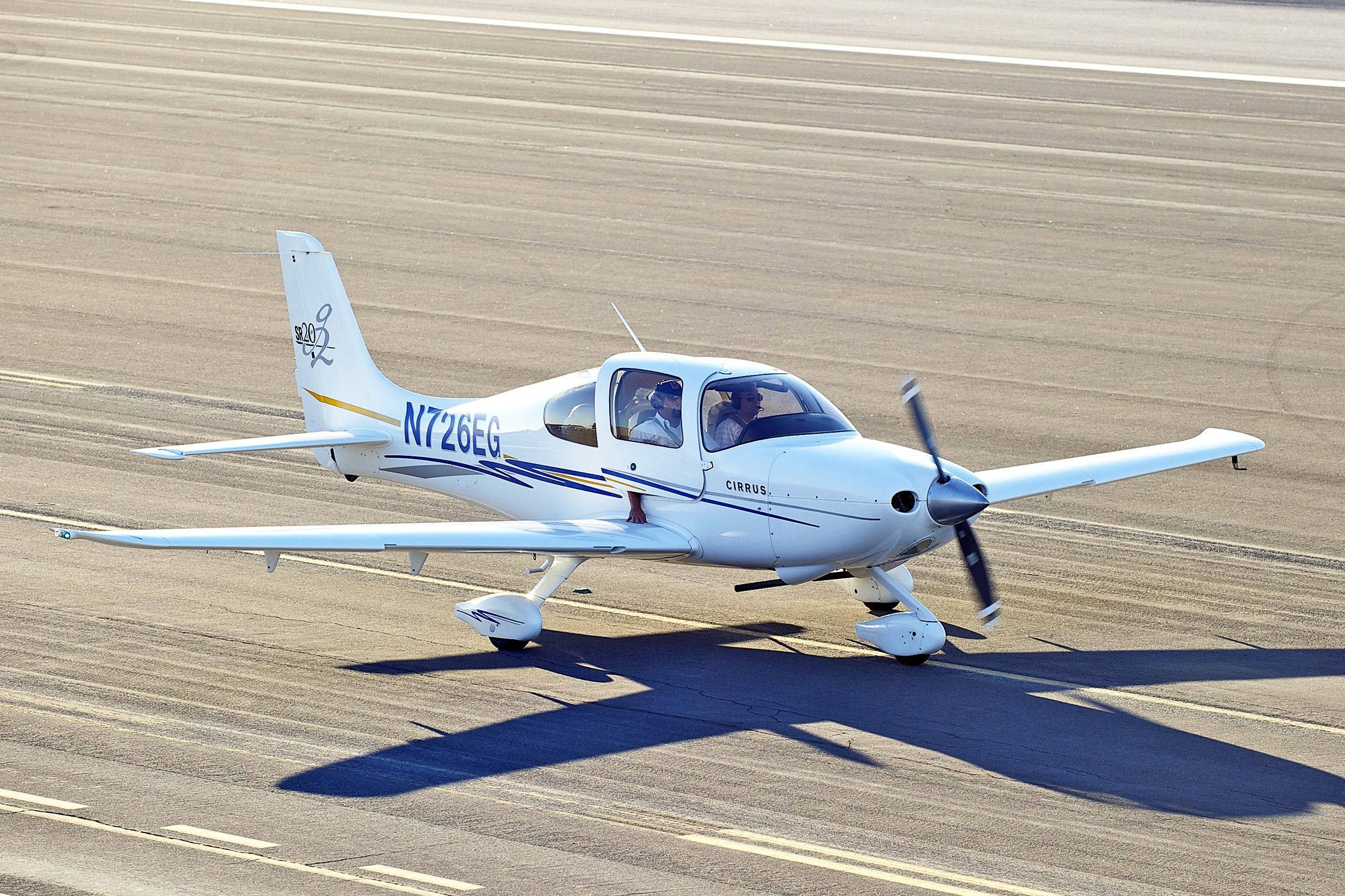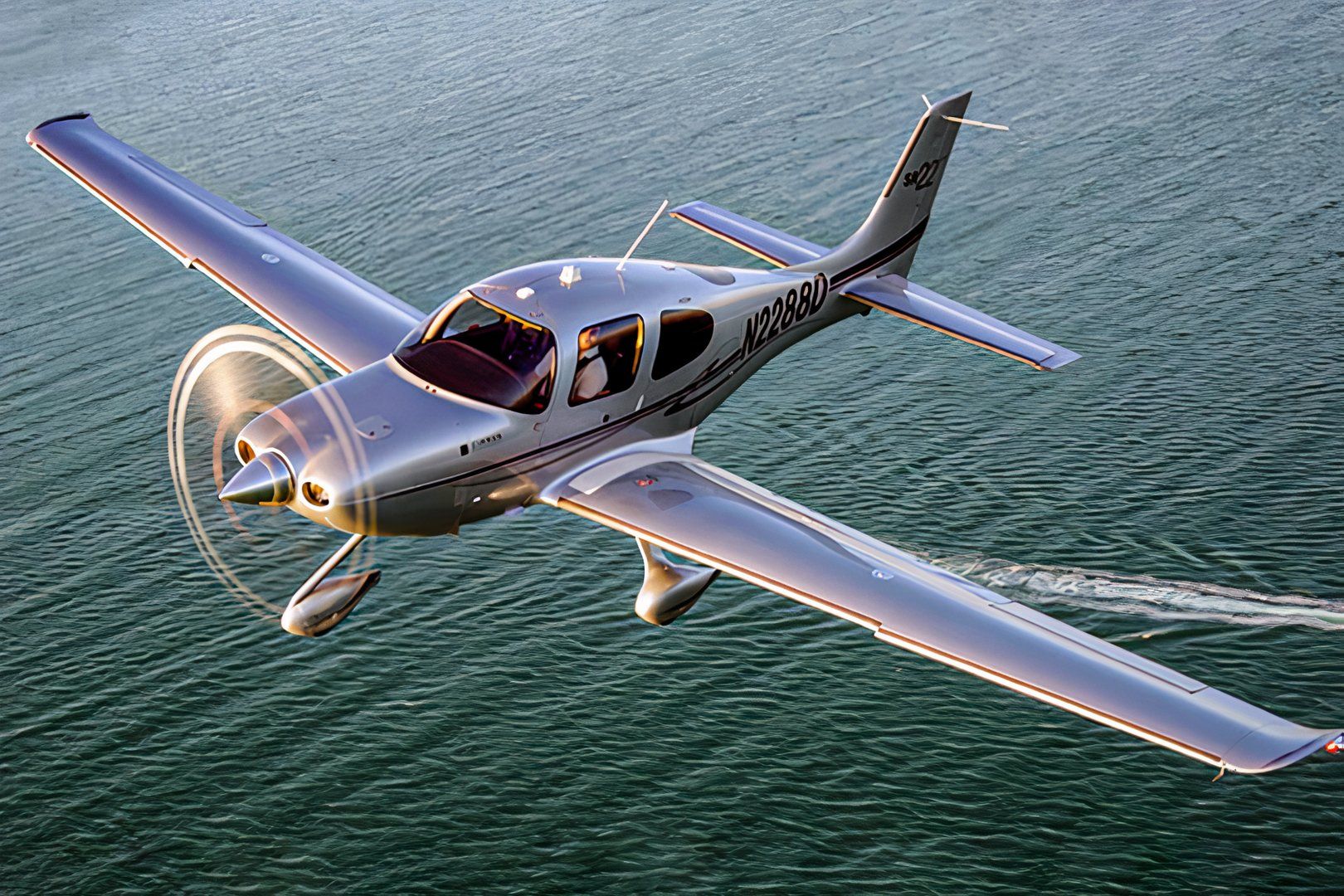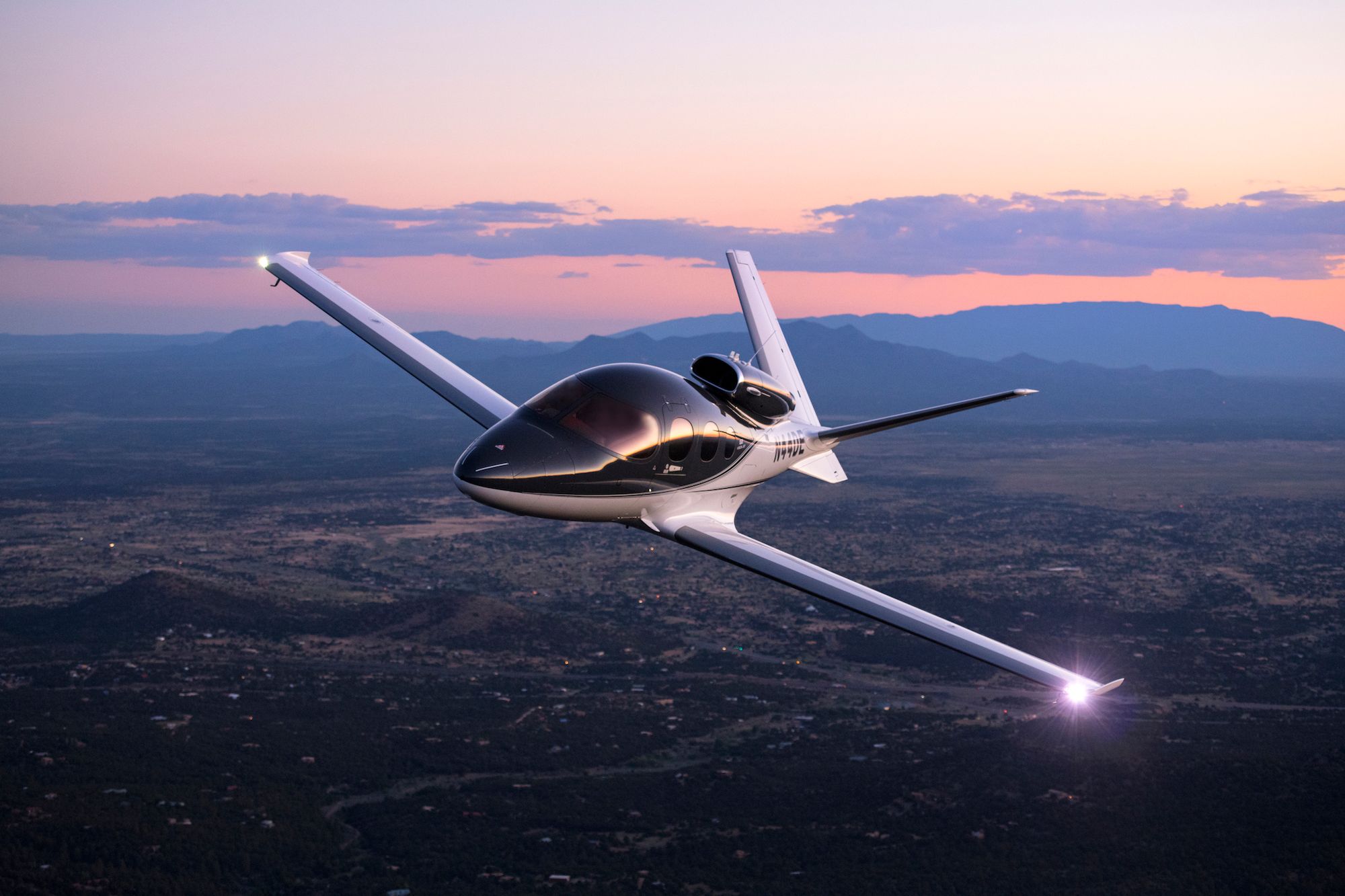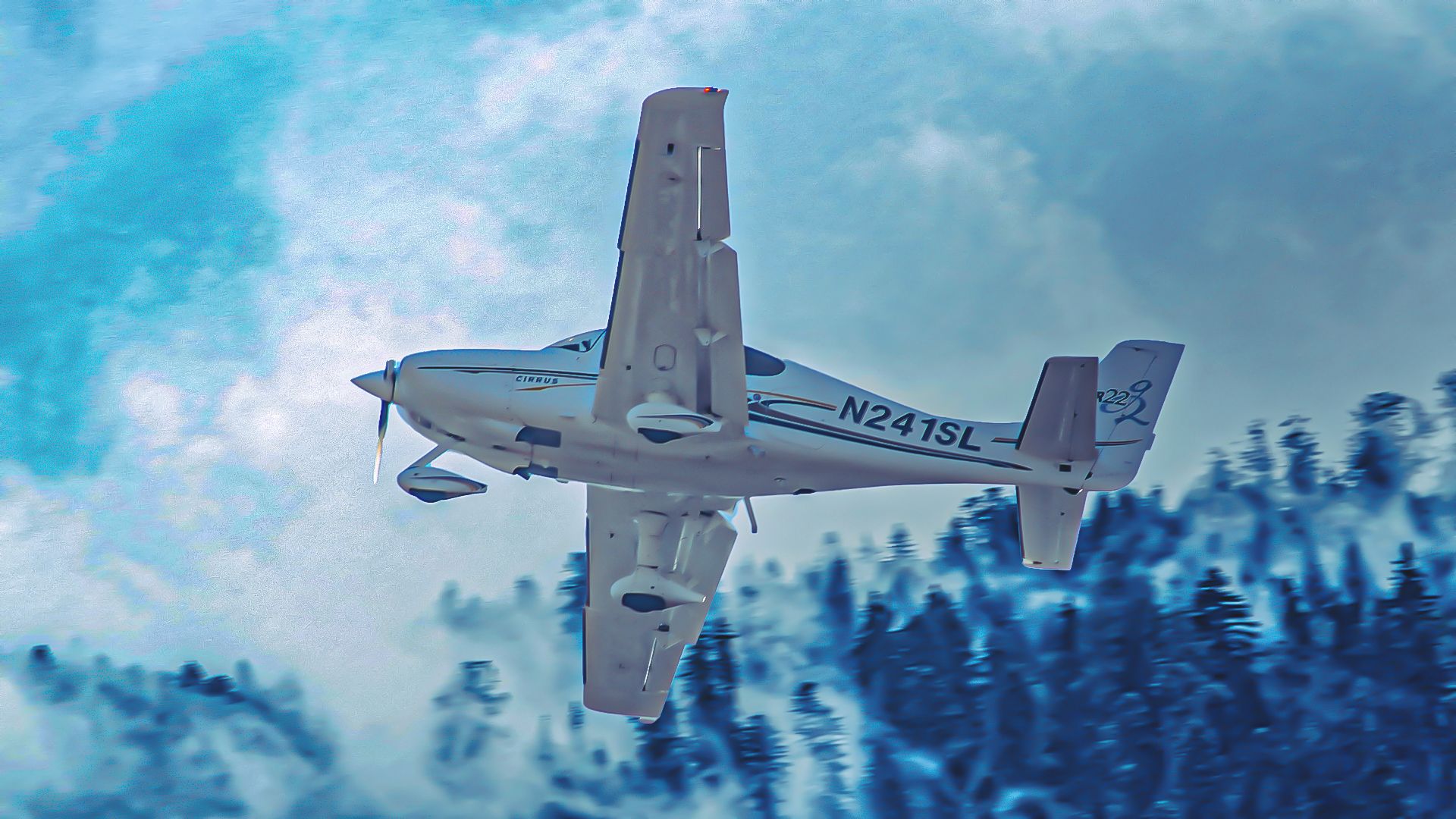Summary
- Humble beginnings led the Klapmeier brothers to create the VK-30, Cirrus’ first aircraft model.
- The SR20 revolutionized general aviation with a safety parachute and all-composite build.
- The SR22, Cirrus’ most popular model, features larger fuel tanks and improved engine power.
Cirrus wasn’t always the industry powerhouse it is today. The company was created by the Klapmeier brothers in their parents’ barn in 1984, with its first product being kit aircraft. However, it has come a long way since, creating high-performance private aircraft and the only civilian single-engine jet aircraft in production.
Today, the Cirrus name is associated with high-performance aircraft for private pilots with unparalleled safety. The company currently produces three models, all in the single-engine, low-wing configuration, which it has maintained since it began producing aircraft.
Here are all the models the Minnesota-based manufacturer produces.
4
VK-30
Humble beginnings
The VK-30 is the aircraft that started it all for Cirrus. It was a family affair, designed by brothers Alan and Dale Klapmeier, Jeff Viken, and his wife Sally. The VK in the aircraft’s name is the inventor’s initials for Viken-Klapmeier.
The VK-30 was a single-engine, low-wing aircraft with tricycle landing gear. The aircraft had a mid-mounted engine, which drove a three-bladed push propeller at the rear. It featured an all-composite build to keep the weight low and a wing designed by Jeff Viken – the NASA NLF(1)-0414F airfoil. The sleek aircraft focused on achieving natural laminar flow, reducing drag, and improving performance. These are all lessons that the company would incorporate into future aircraft.
The aircraft first took flight in February 1998 and was produced until 1993. During this period, Cirrus sold 40 units of the five-seater kit aircraft.
VK-30 Specifications
According to data from the EAA AirVenture Museum, the specifications of the VK-30 are as follows:
| Exterior Specifications | |
| Length | 26 ft (7.92 m) |
| Height | 10 ft 8 in (3.25 m) |
| Wing Span | 39 ft 8 in (12.09 m) |
| Wing Area | 126 ft² (11.70 m²) |
| Weights | |
| Maximum Takeoff Weight | 3,600 lb (1,633 kg) |
| Basic Empty Weight | 2,400 (1,089 km) |
| Performance Specifications | |
| Power @ 2,700 RPM | 300 hp (220 kW) |
| Maximum Climb Rate @ MTOW & ISA | 1,500 ft/min (7.6 m/sec) |
| Maximum Range @ 55 % Power | 1,100 NM (2,100 km) |
| Maximum Speed | 215 KTAS (398 kph) |
| Occupancy | |
| Crew | 1 |
| Passengers | 4 |
| Systems | |
| Engine | Continental IO-550-G |
3
SR20
Skyrocketing to success
The year after Cirrus stopped producing the VK30, the company began working on the aircraft that would propel it to fame: the SR20. The model took to the skies in 1995 and was type-certified in 1998, entering production the following year. It is the first type-certified production aircraft produced by Cirrus.
The SR20 introduced many firsts into general aviation. It was the first production aircraft with a safety parachute and the first mass-produced light aircraft with an all-composite build.
The aircraft was an instant hit and, since its debut, has sold more than 1,500 units.
SR20 Specifications
These are the specifications of the SR20, according to Cirrus.
| Exterior Specifications | |
| Length | 26 ft (7.92 m) |
| Height | 8 ft 11 in (2.7 m) |
| Wing Span | 38 ft 4 in (11.68 m) |
| Wing Area | 144.9 ft² (13.46 m²) |
| Interior Specifications | |
| Cabin Width | 49 in (124 cm) |
| Cabin Height | 50 in (127 cm) |
| Cabin Volume | 136 ft³ (3.85 m³) |
| Weights | |
| Maximum Takeoff Weight | 3,050 lb |
| Maximum Landing Weight | 3,050 lb |
| Basic Empty Weight | 2,122 (960 kg) |
| Useful Load | 1,024 lbs (469 kg) |
| Fuel Capacity | 336 lb |
| Payload with Full Fuel | 434 lb |
| Performance Specifications | |
| Power @ 2,700 RPM | 215 hp |
| Maximum Climb Rate @ MTOW & ISA | 781 ft/min (3.97 m/sec) |
| Service Ceiling | 17,500 ft (5,334 m) |
| Takeoff Distance | 1,685 ft (514 m) |
| Landing Distance | 853 ft (260 m) |
| Approach Category | A |
| Wake Turbulence Category | L |
| Load Factor Limits | +3.8 G, -1.9 G |
| Range | |
| Maximum Range @ 55 % Power | 709 NM ( km) |
| Speeds | |
| Maximum Cruise Speed | 155 KTAS ( |
| Stall Speed Full Flaps | 57 KIAS ( |
| Occupancy | |
| Crew | 1 |
| Passengers | 4 – 5 |
| Systems | |
| Engine | Lycoming IO-390-C3B6 |
| Propeller | 78 in (198 cm) Three Blade Hartzell |
| Avionics | Cirrus Perspective Flight Deck (G1000 NXi) |

Related
Cirrus SR20: 5 Things That Have Helped The Tiny Private Plane Revolutionize Personal Aviation
The type has revolutionized the general aviation sector, introducing many safety and comfort features.
2
SR22
The most popular model
The SR22 was the second mass-produced Cirrus aircraft. Although it looks the same externally, it features large fuel tanks and a more powerful engine, which allows it to fly faster and further. This aircraft solved all the customers’ complaints about the first aircraft.
The 2003 model was the first light aircraft with a full-glass cockpit. This feature was quickly added to the SR20 as well. Glass cockpits have since become an industry standard because they help reduce pilot workload and increase safety and situational awareness.
The aircraft is the best-selling GA aircraft since 2003 and has sold 7,737 units in the last 20 years.
Cirrus also produces a turbocharged version of the SR22 called the SR22T. It is faster and more powerful, but due to its additional weight, it has a reduced range and payload.
SR22 Specifications
These are the specifications of the SR22, according to Cirrus.
| SR22 | SR22T | |
| Exterior Specifications | ||
| Length | 26 ft (7.92 m) | |
| Height | 8 ft 11 in (2.7 m) | |
| Wing Span | 38 ft 4 in (11.68 m) | |
| Wing Area | 144.9 ft² (13.46 m²) | |
| Interior Specifications | ||
| Cabin Width | 49 in (124 cm) | |
| Cabin Height | 50 in (127 cm) | |
| Cabin Volume | 136 ft³ (3.85 m³) | |
| Weights | ||
| Maximum Ramp Weight | 3,600 lbs (1,633 kg) | |
| Maximum Takeoff Weight | 3,600 lbs (1,633 kg) | |
| Maximum Zero Fuel Weight | 3,400 lbs (1,542 kg) | |
| Basic Empty Weight | 2,272 lbs (1,030 kg) | |
| Maximum Payload | 1,328 lbs (602.30 kg) | 1,246 lbs (565 kg) |
| Baggage Capacity | 130 lbs (59 kg) | |
| Fuel Capacity | 553 lbs (250.84 kg) | |
| Payload with Full Fuel | 963 lbs (436.80 kg) | |
| Performance Specifications | ||
| Power @ 2,700 RPM | 310 hp (230 kW) | 315 hp |
| Power Loading | 11.61 lb/hp | 11.43 lb/hp |
| Useable Fuel Capacity | 92 US gal (418 l) | |
| Maximum Climb Rate @ MTOW & ISA | 1270 ft/min (6.45 m/sec) | 1,203 ft/min (6.1 m/sec) |
| Maximum Takeoff Altitude | 10,000 ft (304.80 m) | N/A |
| Service Ceiling | 17,500 ft (5,334 m) | 25,000 ft (7,620 m) |
| Takeoff Distance | 1082 ft (330 m) | 1,517 ft (462 m) |
| Takeoff Distance @ 50 ft Obstacle | 1868 ft (569 m) | 2,080 ft (634 m) |
| Landing Distance | 1,178 ft (359 m) | |
| Approach Category | A | |
| Wake Turbulence Category | L | |
| Load Factor Limits | +3.8 G, -1.9 G | |
| Range | ||
| Maximum Range @ 55 % Power | 1,169 NM (2,165 km) | 1,021 NM |
| Speeds | ||
| Takeoff Speed (VR) | 73 KIAS (135 kph) | |
| Takeoff Speed (V2) | 84 KIAS (155 kph) | |
| Maximum Cruise Speed | 183 KTAS (339 kph) | 213 KTAS (394 kph) |
| Normal Cruising Speed | 171 KTAS (316 kph) | 183 KTAS (339 kph) |
| Long-Range Cruising Speed | 160 KTAS (296 kph) | N/A |
| Maximum Parachute Deployment Speed | 140 KIAS (259 kph) | |
| Maneuvering Speed @ 3,600 lbs (1,633 kg) | 140 KIAS (259 kph) | |
| Best Glide | 92 KIAS (170 kph) | |
| Stall Speed Full Flaps | 60 KIAS (111 kph) | |
| Occupancy | ||
| Crew | 1 | |
| Passengers | 4 – 5 | |
| Systems | ||
| Engine | Continental IO-550 | Continental TSIO-550-K |
| Propeller | 78 in (198 cm) Three Blade Hartzell | |
| Avionics | Cirrus Perspective Flight Deck (G1000 NXi) | |

Related
A Closer Look At The Cirrus SR22 Single-Engine Aircraft
Over 7,500 SR22s have been built since its introduction.
1
SF50
The only single-engine civilian jet aircraft
The SF50 Vision Jet is also a groundbreaking aircraft. It is the first-ever single-engine civilian jet type certified by the FAA and EASA. This very lightweight jet (VLJ) is a low-wing aircraft with a V-tail powered by a rear-mounted turbofan engine.
The Vision Jet idea began during the production of the VK30. In the late 1980s, the Klapmeier brothers approached Williams International about possibly installing the Williams FJ44 turbofan instead of the piston engine. However, the idea was scrapped.
The Vision Jet was announced in 2006 and is powered by the same FJ44 turbofan. The fuselage of the SF50 also resembles that of the VK30.
After years of testing, the aircraft was finally type-certified in 2016, and production began in the same year. Since then, the aircraft has gone from strength to strength, selling over 500 units.
Cirrus Vision Jet SF50 Specifications
These are the specifications of the SF50, according to Cirrus.
| Exterior Dimensions | |
| Length | 30 ft 11 in (9.42 m) |
| Height | 10 ft 11 in (3.33 m) |
| Wing Span | 38 ft 8 in (11.76 m) |
| Interior Dimensions | |
| Cabin Width (Max) | 5 ft 1 in (1.55 m) |
| Cabin Floor Width | 3 ft 1 in (0.94 m) |
| Cabin Height | 4 ft 1 in (1.25 m) |
| Baggage Dimensions | |
| Internal Baggage Volume | 24 ft³ (0.68 m³) |
| External Baggage Volume | 30 ft³ (0.85 m³) |
| Weights | |
| Maximum Ramp Weight | 6,040 lbs (2,740 kg) |
| Maximum Takeoff Weight | 6,000 lbs (2,721 kg) |
| Maximum landing Weight | 5,550 lbs (2,517 kg) |
| Zero Fuel Weight | 4,900 lbs (2,222 kg) |
| Basic Empty Weight | 3,860 lbs (1,751 kg) |
| Maximum Payload | 1,040 lbs (472 kg) |
| Useful Load | 2,180 lbs (989 kg) |
| Fuel Capacity | 2,000 lbs (907 kg) |
| Available Payload with Maximum Fuel | 180 lbs (81.6 kg) |
| Available Fuel with Maximum Payload | 1,140 lbs (517 kg) |
| Performance Specifications | |
| Maximum Thrust | 1,846 lbf (8.21 kN) |
| Service Ceiling | 31,000 ft (9,449 m) |
| Transition Altitude | 18,300 ft (5,577 m) |
| Takeoff Distance | 1,920 ft (585 m) |
| Takeoff Distance @ 5,000 ft & 25C | 3,045 ft (928 m) |
| Landing Distance | 1,628 ft (496 m) |
| Lateral Noise Level | 79.6 dB |
| Flyover Noise Level | 70.9 dB |
| Approach Noise Level | 80.3 dB |
| Approach Category | C |
| Wake Turbulence Category | L |
| Range | |
| Maximum Payload Range | 461 NM |
| Maximum Fuel Range | 1,171 NM |
| Four Passenger Range | 622 NM |
| Ferry Range | 1,220 NM |
| Speeds | |
| Reference Speed (VREF) | 87 kts (150 kph) |
| Takeoff Speed (V2) | 91 kts (168 kph) |
| Maximum Operating Mach | Mach 0.530 |
| Maximum Cruise Speed | 311 kts (575 kph) |
| High-Speed Cruise | 305 kts (564 kph) |
| Long Range Cruise | 259 kts (479 kph) |
| Stall Speed Full Flaps | 60 kts (124 kph) |
| Occupancy | |
| Crew | 1 |
| Passengers | 6 |
| Systems | |
| Engine | Williams FJ33-5A Turbofan |
| Engine Inspection Interval | 4000 hours |
| Avionics | Cirrus Perspective Touch+ (Garmin G3000) |

Related
Small But Mighty: The Story Of The Cirrus Vision SF50
Everything you need to know about the Cirrus SF50 Vision Jet.

